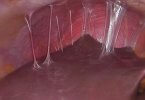What's in this article?
What is Pharyngitis?
Pharyngitis is inflammation of the pharynx, which is in the back of the throat. It’s most often referred to simply as “sore throat.” Pharyngitis can also cause scratchiness in the throat and difficulty swallowing.
According to the American Osteopathic Association (AOA), pharyngitis-induced sore throat is one of the most common reasons for doctor visits. More cases of pharyngitis occur during the colder months of the year. It’s also one of the most common reasons why people stay home from work. In order to properly treat a sore throat, it’s important to identify its cause. Pharyngitis may be caused by bacterial or viral infections.
Causes of Pharyngitis
Pharyngitis is caused by swelling in the back of the throat between the tonsils and the larynx.
Most sore throats are occur during colder months and are caused by viral infections such as the common cold, flu, mono, measles, chickenpox, and croup.
However, bacteria such as Group A Strep, whooping cough (caused by the bacteria Bordetella pertussis), and diphtheria can sometimes cause pharyngitis.
The illness often spreads between people by breathing in bacteria or viruses that are spread in the air, or by touching a surface with germs on it.
Other causes of a sore throat may include allergies, dryness, irritants, straining your throat muscles, gastroesophageal reflux disease (GERD), HIV infection, or tumors of the throat, tongue, or larynx (voice box).
Symptoms of Pharyngitis
The main symptom of pharyngitis is a sore throat and pain with swallowing. In infectious pharyngitis, other symptoms vary depending on whether the infection is viral or bacterial (usually strep throat):
- Viral pharyngitis — Sore throat often is accompanied by other symptoms, such as:
- A red throat
- Runny or stuffy nose
- Dry cough
- Hoarseness
- Redness of the eyes
Children may have diarrhea.
Some viruses cause painful sores in and around the mouth, including the lips.
- Strep throat — Strep throat and other forms of bacterial pharyngitis cause sore throat, pain with swallowing and a red throat. These symptoms tend to be more severe with Strep throat compared to viral pharyngitis. Other symptoms that often occur with Strep throat include:,
- Fever
- Body ache and a general sick feeling generally sick feeling
- Headache
- Enlarged tonsils with a white spots
- Swollen, tender lymph nodes (swollen glands) in the front of the neck.
Children also can have nausea, vomiting and abdominal pain.
Because symptoms of viral and bacterial pharyngitis can overlap, it may be difficult for the doctor to distinguish between them based on symptoms alone. As a general rule, if you have a prominent cough and nasal symptoms you are more likely to have viral pharyngitis than strep throat.
In addition to viral and bacterial pharyngitis, an infection with fungi (Candida or “yeast”) sometimes can cause throat pain, difficulty swallowing and white patches inside the mouth. This throat infection, commonly called thrush, usually affects infants and people with weakened immune systems.
A sore throat that lasts for more than a couple of weeks may be caused by acid reflux from the stomach, breathing through the mouth in a dry environment, postnasal drip or, rarely, a tumor.
Risk Factors for Pharyngitis
Risk factors for pharyngitis include the following:
- Cold and flu seasons
- Having close contact with someone who has a sore throat or cold
- Smoking or exposure to secondhand smoke
- Frequent sinus infections
- Allergies
- Attending daycare
Treatment for Pharyngitis
Most sore throats are caused by viruses. Antibiotics do not help viral sore throats. Using these medicines when they are not needed leads to antibiotics not working as well when they are needed.
Sore throat is treated with antibiotics if:
- A strep test or culture is positive. Your provider cannot diagnose strep throat by symptoms or a physical exam alone.
- A culture for chlamydia or gonorrhea is positive.
Sore throat caused by the flu (influenza) may be helped by antiviral medicines.
The following tips may help your sore throat feel better:
- Drink soothing liquids. You can either drink warm liquids, such as lemon tea with honey, or cold liquids, such as ice water. You could also suck on a fruit-flavored ice pop.
- Gargle several times a day with warm salt water (1/2 tsp of salt in 1 cup of water).
- Suck on hard candies or throat lozenges. Young children should not be given these products because they can choke on them.
- Use of a cool-mist vaporizer or humidifier can moisten the air and soothe a dry and painful throat.
- Try over-the-counter pain medicines, such as acetaminophen.
Home Care Treatment for Pharyngitis
If a virus is causing your pharyngitis, home care can help relieve symptoms. Home care includes:
- drinking plenty of fluids to prevent dehydration
- eating warm broth
- gargling with warm salt water (1 tsp. salt per 8 oz. water)
- using a humidifier
- resting until you feel better
For pain and fever relief, consider taking over-the-counter medication such as acetaminophen (Tylenol) or ibuprofen (Advil). Throat lozenges may also be helpful in soothing a painful, scratchy throat.
Alternative remedies are sometimes used to treat pharyngitis. However, you should contact your doctor before using them to avoid drug interactions or other health complications. Some of the most commonly used herbs include:
- honeysuckle
- licorice
- marshmallow root
- sage
- slippery elm






Leave a Comment